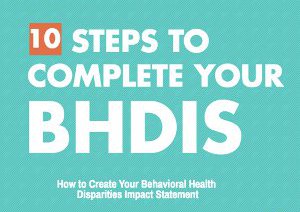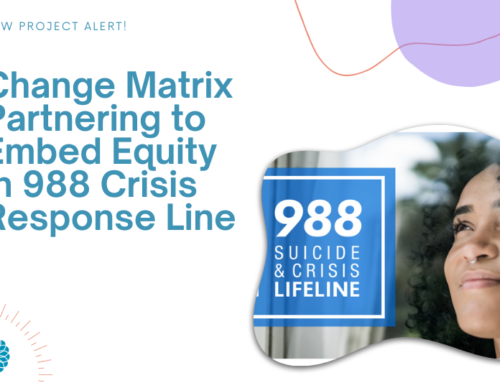“A nation free of disparities in health and health care.”
– Vision of the Department of Health and Human Services (HHS) Disparities Action Plan
Background
In November 2010, Secretary Kathleen Sebelius charged the Department of Health and Human Services (HHS) with developing a Department-wide action plan for reducing racial and ethnic health disparities. This HHS Disparities Action Plan was developed through a collaborative, Department-wide process that actively engaged all HHS agencies. The action plan emphasized approaches that are evidence-based and that would achieve large-scale impact.
In order to assess and heighten the impact of all HHS policies, programs, processes, and resource decisions to reduce health disparities, HHS leadership assures that program grantees, as applicable, are required to submit health disparity impact statements as part of their grant applications.
In translating this requirement to practice, the Substance Abuse and Mental Health Services Administration (SAMHSA) expects grantees to utilize their data to (1) identify subpopulations (i.e., racial, ethnic, sexual/gender minority groups) vulnerable to disparities (2) develop a Behavioral Health Disparities Impact Statement (BHDIS), and (3) implement strategies to decrease the differences in access, service use, and outcomes among subpopulations. These strategies should include the use of the National Standards for Culturally and Linguistically Appropriate Services (CLAS) in Health and Health Care. SAMHSA’s focus is on eliminating the differences in access, use, and outcomes in grant programs.
Overview of the Behavioral Health Disparities Impact Statement (BHDIS)
The BHDIS is comprised of the following three sections:
- Target Service Demographics – A proposed projection of clients that will be serviced by the grantee’s efforts, outlined by race/ethnicity, gender, and sexual orientation. This section includes both quantitative and qualitative data and also acknowledges the dimensions of “quality of care” and “access to care” for the disparate subpopulations.
- A Quality Improvement Plan Using Our Data – The QIP should be a fairly detailed approach outlining ongoing data collection, program adjustment, outcomes, and disparity analysis by the grantee. Essentially, how will the program be monitored and modified over time to best meet the needs of the clients?
- Adherence to the CLAS Standards – The grantee’s programs should be in alliance with cultural and linguistic needs of the identified subpopulations. This section should outline how the standards will be implemented throughout the delivery of services and activities, such as accommodating preferred languages, communication needs, health literacy, and integration of diverse cultural health beliefs.
Change Matrix offers 10 steps to develop your Behavioral Health Disparities Impact Statement:
1) Getting Ready
- Create a guiding group to work on the BHDIS
- Partner with your evaluation team to create a participatory process and strong feedback loops for program improvement
- Outreach and carefully listen to the voices of your community
- Assess the current situation by gathering multiple sources of data on your service population (see below for more detail)
- Become familiar with the CLAS Standards and strategies to integrate them into your work.
The remaining steps are organized by the 3 sections of the BHDIS
Target Service Demographics
2) Provide required projected service population data
- Consider multiple sources of qualitative and quantitative information
- Identify social determinants of health that impact access, treatment and outcomes
3) Provide census data to justify projections
4) Identify current disparities by comparing existing community service utilization/outcomes to census data
Quality Improvement Plan – Convene meeting with program and evaluation staff to:
5) Determine strategies to monitor and measure project activities with this data
6) Discuss how evaluation findings will be integrated into program planning and
management
7) Address how project services will be adjusted or modified based on evaluation findings
Adherence to the CLAS Standards
8) Identify which CLAS Standards the team will address
9) Convene a diverse workgroup to brainstorm activities and partners to engage
10) Address how strategies will be implemented in the organizations and throughout the delivery of services
Using your Behavioral Health Disparities Impact Statement
Change Matrix brings deep experience and expertise working with potential grantees and systems to develop their Behavioral Health Disparities Impact Statements and implementing their plans.
Contact us at info@changematrix.org for more information and support in developing your BHDIS!




